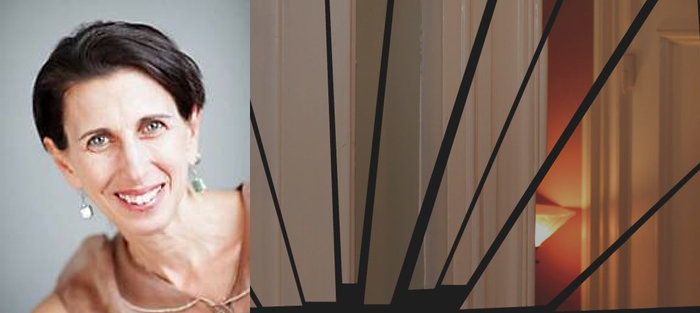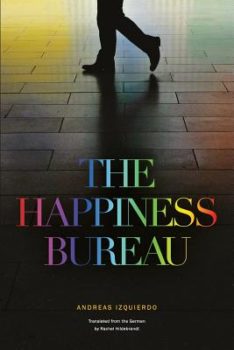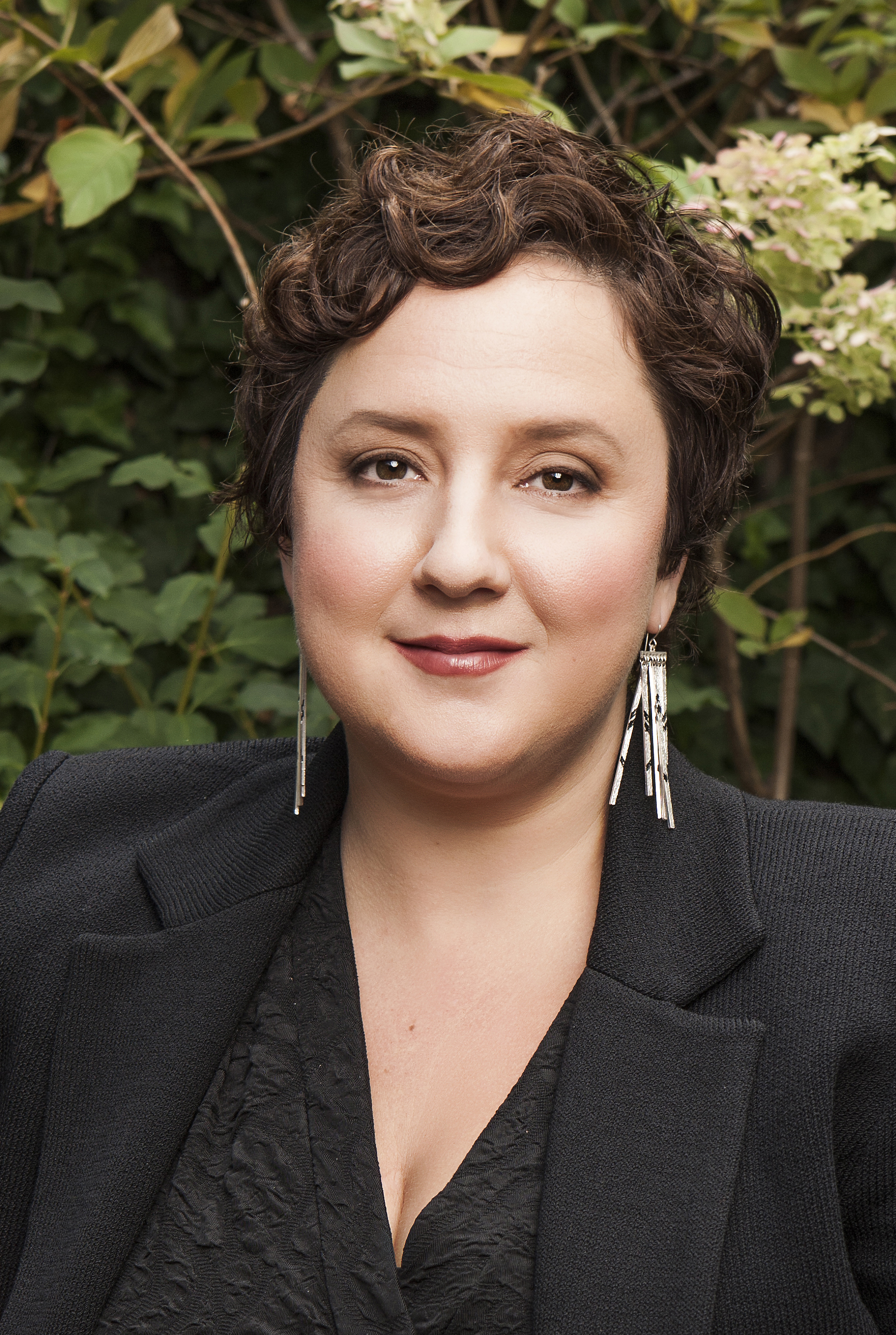I first met Kim Triedman at an AWP panel (“Launch Your Debut Novel”) in early 2013. We were two audience members in a lecture room of at least a hundred. We were also both excited, and anxious, about launching our debut novels.
When Kim emailed me months later, seeking advice on the New York City reading series scene, I was happy to help, and when, this fall, I finally read Kim’s novel, The Other Room, I was stunned. Here I was thinking I had done Kim a favor, when, really, it was the literary world that had been struck lucky, for Kim is a fresh, daring, and emotionally intelligent new voice in fiction.
I bring up the topic of emotion because, although there are many aspects of The Other Room I admired and found deeply engaging—the mood, the precise language, the sensory details and the unique epistolary frame—what I found most impressive was the emotional authenticity of the novel’s characters, their relationships, their fears, needs, and losses. When it seems as if some of the literary fiction published today shies away from emotional clarity, playing it safe, stepping back from that sweet spot, the point right before the story plunges into the forbidden canyon of sentimentality, The Other Room is a reminder that a poetic, literary, and “quiet” novel can consist of more than just beautiful language and structural innovation, though there is plenty of both in The Other Room. Engaging a reader is also about experimenting with emotion, finding that pitch perfect balance of psychological revelation through subtle, but also concrete, emotional implications. Kim told me how her new love for writing poetry, which she began first writing after a draft of The Other Room was completed, taught her how to create that fine balance in revisions.
When Kim speaks about the organic emotional experience of a writer’s process, she reminds us that the best writing can be a kind of ultimate redemption, because, as much as it is a cliché, the stories a writer needs to tell come from the heart—if not from the writer’s own, then informed by the heart of the stories their characters are (in Kim’s words) “meant to tell.”
Kim Triedman is both an award-winning poet and a novelist. Her debut novel The Other Room released in 2013, as did two full-length poetry collections, Plum(b) and Hadestown. The Other Room was a finalist for the 2008 James Jones First Novel Fellowship, and Kim’s poetry has garnered many honors and awards and been widely published. Following the 2010 earthquake in Haiti, Kim co-organized a large, collaborative poetry reading at Harvard University to benefit Partners in Health. The reading was featured on NPR’s Here and Now with Robin Young and led to the publication of a Poets for Haiti anthology, which Kim developed and edited.
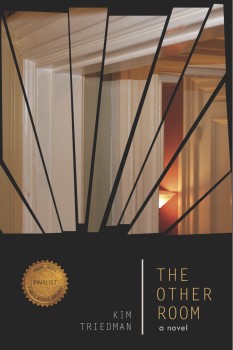 Interview:
Interview:
Julia Fierro: I was so impressed with your ability to show a variety of perspectives in The Other Room, especially when you had only a few characters to work with. You created the sense of depth that comes with many perspectives by choosing a structural frame that incorporates past and present, and even an implication of the future—first, through the three main characters’ alternating third person points-of-view, much of which is dramatized in stunning detail; and, second, through the epistolary device of Claudia’s “notebook,” in which passages are dated in the future.
How did this structure reveal itself to you? Did you begin the book knowing this was the frame The Other Room needed?
Kim Triedman: There was no structural frame for The Other Room when I started out because I never set out to write a novel. All I knew at the outset was that I was following this very singular voice that came to me pretty much out of nowhere, and it felt urgent enough that I couldn’t ignore it. So everything about this project felt organic, from the characters that emerged to the plot line as it unfolded to the rather non-traditional narrative structure. I’d never studied fiction writing before—I wasn’t even an English major in college—and here I was waking up in the middle of the night with scenes spinning in my head that had no context and no discernible scaffolding. I really had no clue what I was doing.
So it started with a voice, and that voice turned out to belong to my main character Claudia, the mother of a young child who’s died under uncertain circumstances. These initial scenes all came to me in first person, and they ultimately ended up as the “notebook” sections you mention, which are dated a few years later than the main through-line of the story. I soon found myself writing some of Claudia’s scenes in third person, sometimes by accident, until I realized that this was the way the main narrative was meant to be told. The story was, in essence, telling me how it wanted to write itself.
As other characters began to grow up around Claudia, I began to hear them, too, and I realized that this novel was meant to be told as a kind of pastiche, with each of the three main characters providing a distinct version of the same story. As in the classic Korosawa film, Rashomon, this structure gave the novel tension and depth, a palimpsest borne of layering and uncertainty and conflict.
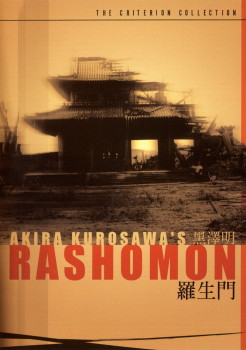 I agree. So much of novel-writing is about patience, waiting for the “story” to reveal itself to you, informing you of what it needs structurally. I often joke in the novel-writing workshops I teach that the personality of a novelist (and this is a big generalization, of course) is often the least conducive to the patience required to write novels. We are an obsessive, controlling bunch, and this may be what motivates us to create on a grand scale, but a big part of writing a successfully engaging novel is learning how to let go of that control when the organic growth of the novel requires it.
I agree. So much of novel-writing is about patience, waiting for the “story” to reveal itself to you, informing you of what it needs structurally. I often joke in the novel-writing workshops I teach that the personality of a novelist (and this is a big generalization, of course) is often the least conducive to the patience required to write novels. We are an obsessive, controlling bunch, and this may be what motivates us to create on a grand scale, but a big part of writing a successfully engaging novel is learning how to let go of that control when the organic growth of the novel requires it.
What did this transition from poetry to prose, and novel-length prose at that, feel like? Were you apprehensive about writing fiction? Was it something you’d done before? Did you consider backing away from the challenge? It was clear to me, as I read The Other Room, that your poetic perspective was hard at work, particularly in creating crystal-clear sentences that were both subtle and sharp in their emotional implication, as well as in the carefully chosen language details.
The thing is, I didn’t write poetry before I wrote the novel. I was a medical writer, and, as I said before, had no idea what I was getting myself into. I really hadn’t done any serious creative writing in my life. I only started writing poetry once I’d completed an early draft of The Other Room, a couple years into the project, when I found I needed to get away from it for a while. I needed to do something else—something smaller and more immediate, more economical. So I started writing a little poetry, something I’d never done, and then I took a couple of workshops, and I wound up doing that for maybe four or five years, and I had a few books of poetry come out before the novel ever found a home. In any case, I can’t say I was ever apprehensive about writing fiction, because I didn’t really know or believe I was heading into what gradually became clear was a novel.
Ultimately I was writing both poetry and fiction—alternating for months or sometimes years at a stretch. The novel went through so many iterations, and there were times I just couldn’t look at it anymore. I didn’t have a fiction writing community, so I really didn’t have anyone but a few friends and family members to talk to about it. At times I needed to just put the whole, complicated behemoth of it aside and work on something finer and more distilled. I needed to sit outside, with a blank page and no expectations or precedents. I wanted to focus wholly on language, on rhythm and musicality and phrasing, without worrying about plot or character development or any of these other things that I was gradually learning about with the novel. The thing about writing a poem—or at least the kind of poetry I write—is that it’s all about the moment, about precision, about finding those first few words and letting them deliver you like a strong current to the very last line, like an answer to a problem. When it’s working, writing poetry has always felt like music to me, and it transports me in much the way music does.
As to backing away from the challenge, I guess I’d say no. Even when I walked away from the novel for years at a time, I knew I had something, and I knew I’d want to return to it. I needed it to be right, and I needed closure. Ultimately, it did the rounds with a lot of top agents and editors, and I got incredible feedback from so many of them. Really detailed, constructive, thoughtful feedback. So I knew I was going to keep on keeping on. I knew I just had to find my way there slowly. That’s what you live with, I guess, when you’re figuring it all out as you go along.
There is something to be said about stepping into writing blindly, without apprehension, but I am really interested in the way you found an escape through writing in a different form—poetry. And I can see how the technique you absorbed through writing poetry in your breaks from the novel was then absorbed into The Other Room. That precision you mention—”…about finding those first few words and letting them deliver you like a strong current to the very last line, like an answer to a problem.”
My next question might be breaking a few rules, since I often hear writers complain about readers identifying the characters in their books with the author him or herself. For me, writing fiction is always autobiographical in some sense. Even if my character is as different from me as is possible they share my fears and needs, my secrets, and shades of my perspective. When I read The Other Room, I was immediately struck by the incredibly authentic portrayal of a family in grief, and, as a mother to two young children, I couldn’t stop myself from wondering how you initially decided to (needed to) write about the death of a child, and then, how you summoned the clarity of perspective, and the strength, to write about such an emotionally grueling situation.
Before I answer that, let me first quickly respond to your remark about the poetry/prose connection: there was incredible cross-fertilization! When I began writing The Other Room, I was following a voice and uncovering a story. These were the exigencies, if you will. I’ve always been a fairly lyrical writer, but after taking time out to write poetry for a few years, I brought something back to the novel that was really priceless in the rewriting/editing phase. I’d really learned how to distill—how to strengthen a metaphor by giving it its own space. My early drafts of the novel were over-rich: there was too much “gorgeous.” Metaphor heaped on metaphor. Although the language was lovely at times, there was not enough room to step back and appreciate, and at times it slowed down the forward motion of the story. What I learned from poetry was how to prune—how to cut away the smaller branches so that those chosen few could really take off. Each subsequent iteration of the manuscript came back so much cleaner and lighter, and what remained in it so much sharper, so I knew I was going in the right direction. It was really just about killing your darlings, but not being a fiction writer I didn’t even know what that meant yet!
Anyhow, as to your main question, this is what I can tell you: No, I never lost a child, but yes, for a brief but earth-shaking, game-changing period, I thought I had. I’m not going to go into specifics, but I had an experience about a year or more before I started writing The Other Room in which I knew beyond knowing that one of my daughters had died. I was with her—I saw and felt it—and I crossed the line so utterly and completely that I knew in every part of myself that there was no turning back the clock. It was a traumatic enough experience that it led in very short order to an acute post-traumatic clinical depression, which is something that is also part of my main character’s experience.
The thing is, for me the depression turned out to be one of life’s greatest blessings, because it was only coming out of that that I started to write creatively. For the first time in my 40 or so years. It really gave me a creative voice that I’d never had before. And it was pure ecstasy. At first it just took the form of journaling (which, by the way, was the inspiration for the “Blue Notebook” sections of the novel), but then, in very short order, I found myself writing those early scenes of what was to become The Other Room. From there, it all just gained momentum, and then, of course, the poetry kicked in.
One last thing: I agree with you—fiction writing is highly autobiographical, but not necessarily in the way people think. There are pieces of me, and people I know, and places I know all over The Other Room. Each of my characters carries something of me inside them, a lung or a knee or a tendency to snort or rage or curl up into the fetal position. But each character is also so much more than me, and so much more than the people I have known in my life. That is something I wish people in general would understand.
My next question is something I’ve been thinking about since we read together at KGB Bar in November, where I was so impressed with the various excerpts you chose in order to give the audience a sense of the novel as a whole. We talked afterward about choosing excerpts to read, and you mentioned the challenges of reading aloud from a book that does focus, in part, on such a tragic event—the death of a young child. Yet, the death is such an essential part of the story that it must be mentioned. How do you choose excerpts to read that give a concrete sense of the weight of the loss driving the book’s urgency while also including moments that reflect other parts of the narrative? I think this question of what to read in front of an audience is one that many writers fret over, particularly when the material is emotional. We think, Well, I don’t want to depress them? Or, Well, I don’t want them to miss out on the fact that book is about loss? But we do want to choose an excerpt that intrigues them, engages them, while offering an authentic promise of what their experience reading the novel might feel like.
Figuring out what to read has been a tremendous and ongoing challenge for me. The first thing I’ll say is that because of both the intensity of some of my material and the collage-type structure of the narrative, I have kind of broken tradition with most of the advice that I’ve heard or read about reading selection. Rather than choose one continuous excerpt, I’ve chosen to “patchwork” my readings, opting for two or three distinct excerpts from different parts of the book and, at times, different character-perspectives. This approach has allowed me to read some of my most emotionally intense and interior material while tempering that intensity with something more upbeat and plot-driven. Within reason, I also tend to vary the selections according to venue. Geographically, most of my readings thus far have been New York/Boston/Providence, and I’m definitely more inclined to push the envelope in Brooklyn than I might be, say, in a conservative Boston suburb. But for the most part, I’m pretty out there. My very first reading from The Other Room was actually a few weeks pre-launch, at Vica Miller’s Literary Salon in Soho, and the theme was erotica. I was the first reader up, and I actually read a phone-sex scene! Fortunately, there was a wine reception pre-reading, so I actually managed to pull it off.
I’d say that I tend to read at least one of my most challenging scenes, because I think they convey the kind of emotional honesty that’s at the heart of this novel. After all, I’m not trying to pretend that The Other Room is an easy read. It’s not for the faint of heart, and it’s not for readers that don’t like being challenged by their reading material. There’s certainly more than grief in the book: there’s love and humor and suspense and, ultimately, the emergence from grief. It’s dawned on me gradually that readings are at least partly about sales, but for me they’re more about re-inhabiting my characters and giving my audience a snapshot (or two, or three) of what they’ll find inside.
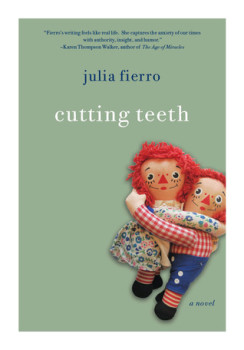 A big part of being a professional writer, and promoting your work, is reading it aloud, whether that is at reading series, festivals, conferences, etc. And it isn’t something discussed in workshop, or in class at MFA programs. I think writers will find your reasoning very helpful, particularly the use of a “patchwork” of excerpts.
A big part of being a professional writer, and promoting your work, is reading it aloud, whether that is at reading series, festivals, conferences, etc. And it isn’t something discussed in workshop, or in class at MFA programs. I think writers will find your reasoning very helpful, particularly the use of a “patchwork” of excerpts.
I also use a “patchwork” of excerpts, and try to include sections from two characters’ points-of-view (often scenes that involve both characters, but are filtered, first, through one character’s eyes, and then, through the other). My hope is that this will create a more complex and nuanced sense of character, relationship, situation, and that I can also create a mini-arc, allowing the audience a sense of beginning, middle and end, of dramatic rise and resolution. Of course, this is done on a very small scale, but I find that if I’m really careful about picking and choosing, I can create an excerpt that gives the listeners a sense of “story.” One of my goals as a writer reading, and, often, performing, my work, is to entertain, after all.
Last question, and it may be a simple one, or a complex one, depending. What are you working on now? Or, what are you working on next? As I start to rev the engine on the pre-publication of Cutting Teeth, I can see clearly how time consuming the process is. What are you working on, or hoping to work on? And how do you find the time to write?
I’ve written a lot about the challenges (and, yes, miseries) of the pre-publication process, so I’m not going to talk (read: whine) about that here. Suffice it to say I found the six-months leading up to my launch to be one of the most difficult and depleting periods of my past decade, requiring a skill set and a mind-set that I (and most writers, I would venture) just don’t have. It brought me as far from creative writing as it possibly could, leaving me a kind of stranger to myself. Add to this the three months or so of intensive reading and travel and interviewing post-publication, and you begin to comprehend just how removed from actual writing the published author can become in this current market.
So here I am, three months post-launch, having actually released not just The Other Room this year but also two full-length poetry collections. I was working on all three manuscripts simultaneously (though for vastly different lengths of time), and they all happened to be picked up by separate presses within a year of one another. So I now have a very large blank page staring me in the face, and I’m not quite sure what to do with it. As of this moment in time, I know how to tweet, I know how to pitch to reviewers, I know how to blog. I know how to cross things off my to-do list. But I’m not actually sure I know how to write anymore—to keep all the other noises at bay and find the quiet that allows it.
The last of the three books to come out—Hadestown (WordTech Communications) — was an experiment in prose poetry, something I’d never tried my hand at before. This book-length prose poem is a kind of bizarre, myth-based, post-apocalyptic travel narrative, and it practically wrote itself. It was fast and furious, and I never felt as though I knew what I was doing. There was a breathlessness to it, and all the rawness that comes out of blind impulse. It was so incredibly freeing for me, working between the lines of fiction and poetry and constrained by neither one. And I’m so happy with the way it came out. So if I were to guess at this point, I’d say I may be headed in the direction of some kind of nontraditional narrative, falling either in the fiction or prose-poetry universe. We’ll have to see. Planning doesn’t seem to be my strong suit.
I know when it’s time to shut up and wait.

